Introduction
Berlin is a city of many faces, one that is often seen as the bohemian center of Europe that has something to offer to every citizen or visitor. However, not many people know what Berlin is like beyond the pictures of tourist attractions. In fact, it is now one of the most self-conscious world capitals with the most ambiguous history. There is hardly a street in Berlin that does not have a museum, a memorial, or a sign telling about the events that took place at the site (Baker 710).
All these memorial spots can be interpreted both diachronically and synchronically; they are all linked to a particular period of the past and, at the same time, make a contribution to the present and future attitude of the population regarding the current state of affairs in Germany (Baker 711). The paper at hand aims to show how the German dictatorial past is implicitly manifested in the country’s culture and still has an effect on people’s mentality. It will explicate the dubious nature of cultural phenomena, which German society preserves as monuments while simultaneously trying to efface the memory of their origins. In particular, the research will touch upon the sights of the city that still bear the burden of the former political systems.
Berlin Underworld Bunkers and Tunnels: The Concealed Nazi Labyrinth
On the surface, Berlin’s architecture is rather eclectic and modern as the majority of its buildings were destroyed during the war. Nevertheless, the Berlin Underworlds Association (Berliner Unterwelten) has implemented a program to unearth, investigate, and display the underground part of the city, which is full of secret chambers and tunnels connecting bunkers across Berlin (Beck 80).
The aim of this section of the paper is to show how present-day German society seeks to explore and preserve the places that were once taboo subjects and to consider what these places really look like. It will deal with the issue of bunkers and tunnels – the labyrinth that mars the face of the city as a reminder of the shameful Nazi period but that at the same time contributes to the city’s status as a popular tourist attraction.
During the period of World War II, there arose a need to protect both the government and the population of Berlin from air attacks and gas warfare. Thus, more than a thousand bunkers ranging from small underground shelters to large multi-sectional command headquarters were built, creating a city under Berlin that was connected to the above-ground city only by a small number of staircases (Beck 81). Hitler also included a network of tunnels into the project. One of these tunnels connected the strategic governmental headquarters, including the notorious Führerbunker, to the airport situated in Templehof, providing a secure means of escape (Beck 81).
The last resort of the Third Reich remained untouched for several decades after World War II and was finally excavated only after the fall of the Berlin Wall. A lot of artifacts (including Nazi furniture, paintings, and personal effects) remained intact. The government at the time actually made an attempt to destroy the bunker because they were worried that this site would become a new Nazi shrine and would revive the Nazi ideology in people’s minds. For this reason, ordinary, inoffensive buildings are now constructed over it (Knischewski and Spittler 27).
There are now about 100 bunkers in the city that belong to private owners and are inaccessible to the general public. However, the Berliner Unterwelten has made a great effort to explore, research, and preserve these sites (Beck 82).
At Gesundbrunnen, an underground station, there is a huge bunker with bedrooms, lavatories, and even a separate room for pregnant women (Beck 82). The place has been restored, and now excursions are conducted there. Among other remarkable bunkers, it is worth mentioning the one at Alexanderplatz, an underground hospital in Wannsee, the radiation-proof shelter situated under the Story of Berlin museum, and the restaurant-bunker Nocti Vagus. The latter is very popular among both citizens and tourists because all the meals and ceremony are performed in complete darkness (Beck 85).
Thus, it is evident that these cultural reminders are much sought after, despite the fact that this popularity is counteracted by a feeling of guilt from which the whole nation still suffers over the Nazi rule and its many victims (Knischewski and Spittler 28).
There is a growing interest in the controversial issue of the war children generation’s psychological victimhood for the mass murder committed by the Nazis. That is the reason why the Third Reich is still present in the culture: it helps eliminate the pressure that young people feel because of this period of the country’s history. Berlin is the most demonstrative city in this respect (Knischewski and Spittler 28). However, the focus of attention has shifted away from non-Jewish Berliners who suffered under the regime.
Trying to do its best to wash away its guilt, the nation pays tribute to Jewish victims but considers it shameful to mention that a huge number of ordinary Germans were also exploited and killed. Almost all the remaining bunkers are the result of Jewish slave labor. Those serving commercial purposes generally demonstrate a rich cultural heritage of the Third Reich that cannot be forgotten (Fulbrook 128).
Despite the fact that most Germans understand that the Nazi bunkers are underground museums that record events of paramount importance, there are still many activists who strive to attach positive associations to these sites. Thus, it is now often mentioned in the course of the tours that these bunkers were built for the civilian population and saved a lot of lives. Besides, after the erection of the Berlin Wall, the tunnels helped refugees flee from East Germany and reunite with their families (Knischewski and Spittler 28).
Thus, by exploring the bunkers’ history, we can see how historical landmarks tend to trigger a lot of controversy within society when their origin is connected with events that are shameful to the nation. On the one hand, their presence in the city gives it an incomparable air and attracts researchers and tourists. Thus, these memorial sites are an integral part of the city’s image. On the other hand, they do not allow people to forget facts that they would probably prefer to bury in oblivion.
The Stasi Issue
Another problem that the research concerns is the ambiguous presence of the former headquarters of the secret police, the Stasi, in the city, in the context of a contemporary German society that cannot rid themselves of the feeling of guilt. The present-day authorities, as well as social activists, have argued over the issue of the Stasi trace in the culture and in people’s minds (Jones 2). This part of the paper will investigate the reaction of the population to the Stasi parts of Berlin and show what attempts at alternative interpretations were made in order to present this historical and cultural phenomenon in a positive light.
After the fall of the Berlin Wall and the collapse of the Soviet Union, German society witnessed a phenomenon that is often referred to as “the shift of the memories.” These events have triggered a lot of debate and have finally changed the interpretations of the recent past. The fall of the Wall made a reconsideration of the Stasi role and activity in the country inevitable. There began a process of commemoration that opened a new conflict caused by a historical judgment of immoral behavior.
The significance of the Stasi issue reveals itself in the number of museums devoted to it across the country (Verheyen 3). The basic intention behind these organizations is to commemorate the political prosecution and repression of the communist dictatorship while at the same time highlighting the advantages of the current democracy. Thus, these places serve as both a deterrent and a source of education (Jones 5).
Even so, most Berlin headquarters of the Stasi were in a deplorable state for a long time because it was difficult for all parties to reach an agreement regarding what to do with them. The government had planned to take over the former office of Erich Mielke, the head of the secret police, and turn it into a national museum after some restoration. However, there was a continuous battle over every detail, mostly about who had the right to interpret the history and in what way it should be done. The government clearly stated that private initiatives were not welcome, but activists were not willing to allow the state to deny the population their right of choice (Jones 6).
The whole complex consists of 20 major and 13 auxiliary buildings, most of which are in ruins at this point and are difficult and expensive to restore. For this reason, the government focused its attention on Building 1, which housed Mielke’s office. A memorial program was launched in order to give an official interpretation of the Stasi actions and to gradually eliminate the silent terror that this organization still evokes in German citizens (Jones 6).
Although it was clear from the very beginning that Building 1 would remain standing as a museum, there were and are a lot of proposals concerning the whole territory of the complex. City activists have suggested numerous projects with designed plans of the site. They have mostly recommended turning the offices into apartments or studios for local artists. Some have even suggested that the government declare the Stasi complex a redevelopment area and demolish most of the buildings (Fulbrook 130).
As expected, Mielke’s office was renovated. The entire complex is now a series of labyrinth-like buildings that remind the local population of how truly terrifying and omnipresent the Stasi was. The complex is a kind of city within a city and is surrounded by offices, supermarkets, and apartment buildings. Building 1 features carved busts of Marx and Lenin in the halls, yellowish walls, and marble columns.
The first and the third floors house a series of galleries devoted to general information about the regime, whereas the second floor is devoted completely to Mielke himself. There are also meeting rooms, a bathroom, and a small kitchen, all furnished luxuriously with sofas, chairs, long tables, and even a bed (which means that Mielke spent most of his time in his office) (Fulbrook 131). Although this complex is now a really popular touristic attraction, the problem is far from being solved.
Despite the attempts of the government to present the restoration of the complex as a means of preserving an important historical and political landmark, the reaction of the population to the symbolic rebirth of the Stasi regime has been rather more negative than positive. Many people, especially those of the Cold War generation, are unwilling to witness the history of repression and spying in the context of their modern democratic society. Thus, it is fair to say that not all cultural phenomena deserve renewal and preservation.
The East Side Gallery: Annihilation and Preservation of the Past
The East Side Gallery is now suffering from the pressure of both time and urbanization. The majority of the paintings have been ruined by erosion or vandalism. The third section of the research at hand is going to juxtapose the two contradicting tendencies to preserve and eliminate the remains of the Berlin Wall, which still symbolically stands for the division of the country, thereby evoking negative memories. It will also explore the copyright conflict that arose from attempts to restore the memorial (Verheyen 3). The section will provide contemplations about the significance of the Wall in the history of the city as well as its role for those who painted it.
Another horrifying and terrible scar on the face of Berlin is the so-called East Side Gallery, which is located on the remains of the Berlin Wall. Like the two previous cases, the population of the city has split into two opposing camps: those who are proponents of the annihilation of the Wall (together with the shameful past that it stands for) and those who take pride in resisting the desire to conceal the past with the help of gentrification (Frederick 715).
The East Side Gallery project was launched in 1990, when a group of artists from all over the globe started to create the largest open-air exhibition in the world. It can be presumed that the primary objective of the project participants was to celebrate the joy of the country’s reunification and to commemorate the Wall of Shame as a deterrent. Thus, the project is simultaneously a symbol of the freedom regained and the dictatorial past that Berlin is trying to bury (Frederick 715).
To many citizens, the graffiti on the east side of the Wall is an offense against the East Germans who died while trying to escape. The point is that even those who attempted to paint something on the Wall were severely punished as graffiti was banned, whereas the west-facing portion of the Berlin Wall had been covered with various kinds of rebellious pictures. This difference is now lost (Frederick, 716).
By 1998, most of the paintings had faded to the extent of becoming unrecognizable, and a process of restoration began. It was repeated in 2000 and 2009, with the only difference being that there were already doubts about the impact of the Gallery and the necessity to continue preserving it (Frederick 716). The problem is that almost nothing is left from the original murals; they either have to be repainted and stay anachronistic in the subjects that they manifest, or artists should be allowed to cover the Wall with the contemporary-oriented paintings reflecting the current time (Verheyen 10).
Since this issue is hard to resolve, the Gallery is gradually deteriorating due to vandalism and erosion. Moreover, during the restoration process, there occurred a copyright conflict when some artists refused to paint their own images, and the images were still copied without their permission. This incident led many people to believe that any further work on the Wall should be stopped because it brings about too many social conflicts (Frederick 718).
In the new German society, a desire to eliminate all signs of the division is still powerful among the people, no matter how important this unintentional monument may be from a historical point of view. Thus, the government made the decision to erect a fence around the Gallery in order to protect it from vandals and tourists (Frederick 719).
As far as this research is concerned, it is clear that such monuments manifest a powerful resistance against the phenomenon of historical amnesia. The Gallery stands for the harmful division that was imposed upon the entire population of the city, which means that it cannot be deleted from memory no matter how painful the events were. Moreover, the East Side Gallery has the added significance of displaying artistic masterpieces that mostly depict universal values, such as freedom, optimism, hope, friendship, solidarity, and unity.
What is visible now is the result of a collective effort of a great number of people to keep the history alive and to emphasize the value of democracy. There are now many artists who claim that they painted the Wall for future generations to remember, not to destroy (Frederick 720).
As a memorial, the East Side Gallery has not lost its significance and visual impressiveness yet. However, as a work of art, the Gallery continues to lose its initial face, which has long been covered with graffiti and has been partly destroyed. Nevertheless, the memorial is still profoundly touching and has a long-lasting and even life-changing impact on the viewer. It makes one understand how a work of art may stir up public opinion and still evoke strong emotions that embrace the contradictory desires of remembrance and forgetting.
Conclusion
In conclusion, it is worth reiterating that the issues of historical guilt and the desire to preserve the authentic cultural background have a complex and intricate relationship in German society. One cannot trace any continuity and consistency in the representation of the two German dictatorships. All that can be found is a bundle of memorials and exhibitions that contradict one another, as private and public memories often form completely different versions of the events, which show conflicting and overlapping pictures of the past.
The problem underlying this discrepancy in Berlin lies in the fact that all of these memorials are not simply commemorations of the past but are also potential interventions in the present and markers of the desired future of the country in general and the city in particular. Through an analysis of these memorials, one can observe one of the most interesting cases of how former political powers can have a lasting effect on the current powers—all through the power of representation.
Appendix
Bunkers
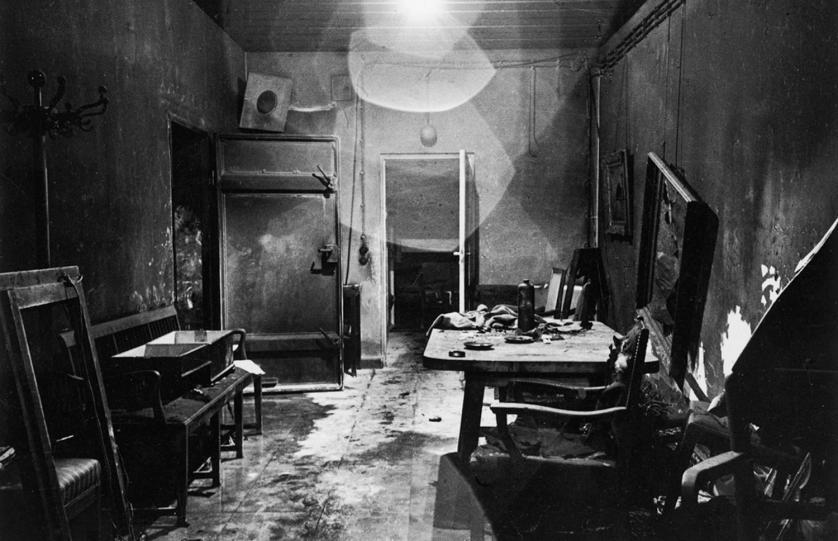
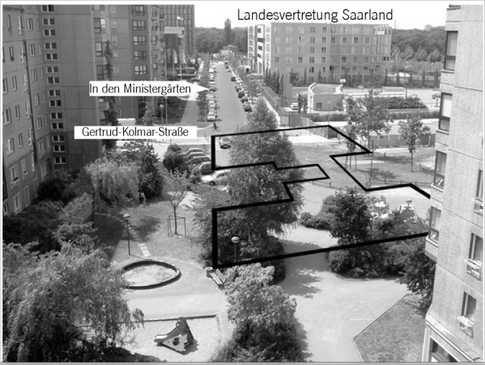

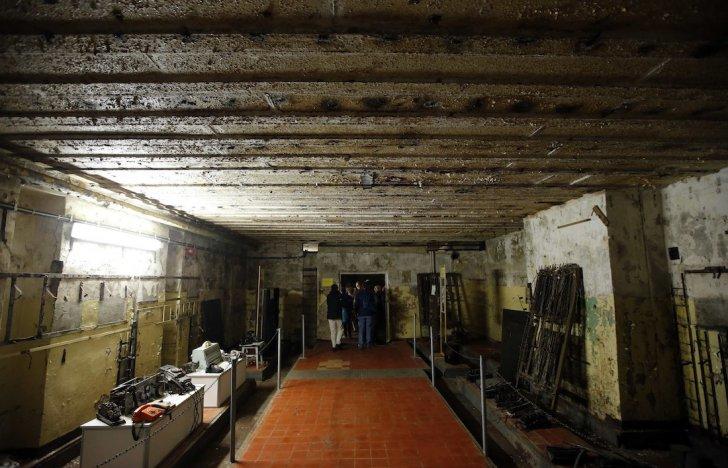
The Stasi Complex


The East Side Gallery
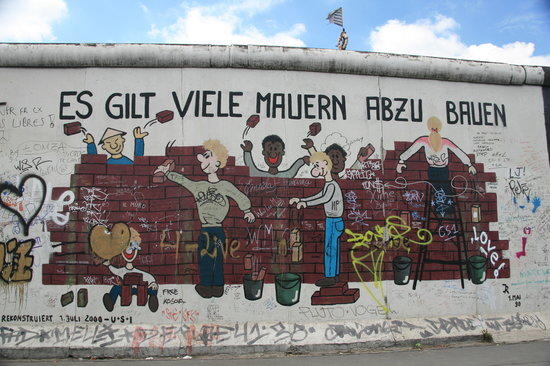
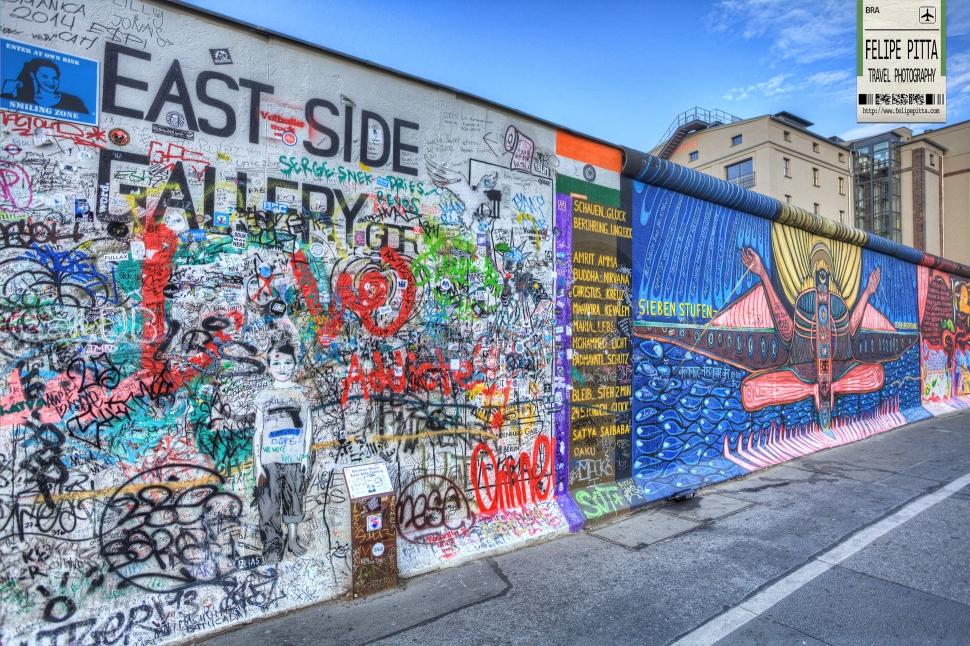
Works Cited
Baker, Frederick. “The Berlin Wall: Production, Preservation and Consumption of a 20th-century Monument.” Antiquity 67.257 (1993): 709-733. Print.
Beck, John. “Concrete Ambivalence: Inside the Bunker Complex.” Cultural Politics 7.1 (2011): 79-102. Print.
Fulbrook, Mary. “Historical Tourism: Reading Berlin’s Doubly Dictatorial Past.”Memory culture and the contemporary city. Palgrave Macmillan UK, 2009. 126-144.
Jones, Sara. The Media of Testimony: Remembering the East German Stasi in the Berlin Republic. Springer, 2014. Print.
Knischewski, Gerd and Ulla Spittler. “Remembering in the Berlin Republic: The Debate about the Central Holocaust Memorial in Berlin.” Debatte: Journal of Contemporary Central and Eastern Europe 13.1 (2005): 25-42. Print.
Verheyen, Dirk. United City, Divided Memories?: Cold War Legacies in Contemporary Berlin. Lexington Books, 2010. Print.